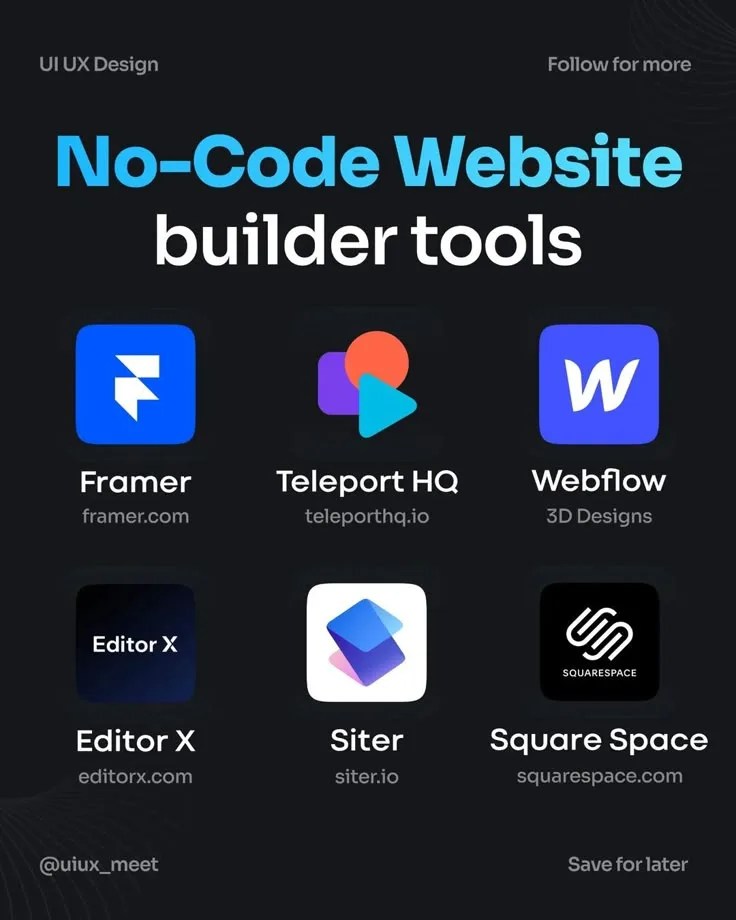Once upon a time, “building a website” meant one of two things: learn to code or pay someone who did. Fast-forward to 2025, and the no-code revolution has kicked the old rules to the curb. Now, anyone with a mouse, an idea, and internet access can create high-performing websites—without touching a single line of code.
Let’s break down how today’s no-code tools are transforming the web design world—empowering creators, small businesses, marketers, and freelancers to build smarter, faster, and more beautifully than ever before.
Table of Contents
- What Exactly Is No-Code Web Design?
- Top No-Code Platforms Leading the Charge
- What You Can Do With No-Code in 2025 (That You Couldn’t Before)
- Why Designers Are Still Using No-Code (and Loving It)
- Real-Life Use Cases Popping Up Everywhere
- AI + No-Code = Superpowers
- What’s the Catch?
- Who Should Be Using No-Code in 2025?
- Conclusion: You Don’t Need to Code to Create Impact
What Exactly Is No-Code Web Design?
No-code design refers to platforms that let users build functional websites through visual interfaces—think drag-and-drop, click-to-edit, and simple logic flows. It’s the Lego version of development: all the pieces are there, you just put them together.
But don’t be fooled by the simplicity. These tools aren’t just for “basic” sites anymore. In 2025, no-code platforms come with:
- Responsive layouts
- Animation tools
- AI assistance
- Ecommerce integration
- App logic and automations
- Advanced SEO controls

Top No-Code Platforms Leading the Charge
1. Webflow
A designer’s dream. Webflow combines pixel-level control with CMS functionality, and now includes AI suggestions for layout, accessibility, and content generation.
2. Framer
Perfect for landing pages, portfolios, and modern designs with smooth animations. Framer uses AI to build entire page sections from prompts.
3. Dorik
Affordable, beginner-friendly, and ideal for startups. Comes with built-in blogging tools and white-labelling for freelancers.
4. Softr
Turns Airtable databases into fully functional client portals, marketplaces, or internal tools. No-code, fully responsive, and powerful.
5. Typedream
If Notion and Webflow had a baby—Typedream lets you build fast, clean websites with minimal friction. Loved by creators and indie hackers.
6. Tilda
Known for its typography and storytelling flow. Great for brands that rely on editorial-style websites with gorgeous layouts.

What You Can Do With No-Code in 2025 (That You Couldn’t Before)
- Build responsive web apps (yes, apps!) without dev teams
- Add AI chatbots, quizzes, and booking systems instantly
- Launch e-commerce stores with built-in payment systems
- Automate tasks like email notifications, form integrations, and customer pipelines
- Design animations and interactions with zero JavaScript
And all of it? Drag, drop, done.
Why Designers Are Still Using No-Code (and Loving It)
Even trained designers are swapping Figma-for-dev handoffs for no-code platforms. Why?
- Faster iterations
- Live previews
- Instant feedback from clients
- Easier handover to non-tech stakeholders
- Less need to rely on devs for small changes
No-code lets designers own more of the process—concept to execution—without bottlenecks.

Real-Life Use Cases Popping Up Everywhere
- A coach in Leeds built a lead magnet funnel with Framer in 45 minutes.
- A DJ in Berlin launched a gig booking site using Tilda—no devs involved.
- A wedding planner in Lagos used Dorik to launch her portfolio, blog, and contact form—all in one weekend.
- A SaaS startup in Bristol used Webflow for a slick site that converts like crazy—and updates content in real time with their CMS.
AI + No-Code = Superpowers
Many no-code platforms now integrate AI tools directly:
- Suggesting color palettes based on your brand
- Writing headlines and CTAs
- Generating blog content
- Fixing spacing and layout inconsistencies automatically
- Predicting user journey flows to improve UX
This is no longer about building fast—it’s about building smart.

What’s the Catch?
Let’s be honest—no-code isn’t always a silver bullet.
- Scalability: Some platforms get pricey or limited with high traffic.
- Custom logic: Truly unique functions still require low-code or developer help.
- SEO tuning: You still need to know your keywords and apply best practices.
But for 90% of modern businesses, no-code gets the job done beautifully.
Who Should Be Using No-Code in 2025?
- Freelancers building client sites or personal portfolios
- Coaches, consultants, and solopreneurs launching fast
- Small teams validating startup ideas before going all-in
- Marketing teams that need landing pages weekly
- Designers who want more control and less back-and-forth

Conclusion: You Don’t Need to Code to Create Impact
Web design in 2025 isn’t about the code—it’s about the experience. Thanks to no-code tools, creators of all backgrounds are building beautiful, high-performing websites with confidence and speed.
So whether you’re launching a side hustle or running a growing brand, the tools are already in your hands. You don’t need a degree in CSS—just a vision and a few clicks.



